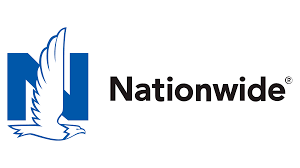It sounds devastating, but your basement can flood more frequently than you think. 98% of basements are flooded at least once in their life span.
Whether it is due to heavy rain, broken pipes, or failed supply lines, the basement flood clean up process is a tedious one. This is where water damage restoration companies come into action – to mitigate the damage and restore your property back to its original state.
Contents
Basement Flood Water Removal
Flood represents a health risk even when there is only a few inches of water. You might be facing gas leaks, raw sewage, structural damage, or electric shocks. If there is any sewage water involved, the toxic gases can harm your eyes and your lungs.
This is why it is best to let the professionals handle it. Our experts use safety equipment and professional tools to properly remove the water from your basement and prevent further damage to your structure.
Performing a thorough drying process is highly important to avoiding mold growth. Even when you think you have extracted all the water, there might still be some hiding behind wall cavities or under your flooring. Therefore, we use our specialized water detector tools to locate the source of water leakage and extract it completely.
Once we remove all the water from the flooded basement, it’s time to inspect the damages.
Damaged Items You Cannot Save From A Flooded Basement
Some belongings are beyond salvage, especially if you have sewage water flooding your basement. These are some of the things you should throw away:
- Drywall or parts of the ceiling that have absorbed water. A good precaution method is to remove materials at 1.5 feet above the affected area.
- Any carpet or flooring that has been heavily soaked in a flood or sewage water.
- All insulation components
- All the food that touched the flood, including canned goods.
- Particleboard furniture
- Items such as pillows, mattresses, cushions, stuffed toys, and paper goods, cannot be properly sanitized.
Water Damaged Items You Can Salvage and/or Restore
Some less affected possessions can be cleaned and sanitized. Here is what you can potentially save after a basement flood cleanup:
- Any flooring or carpets that are not soaked in water. We advise you to get your carpets professionally cleaned to make sure they are sanitized and deodorized.
- Furniture that did not touch the flood for too long, except particleboard furniture.
- Clothing. You can add one cup of chlorine bleach to the washing machine along with the soap to disinfect them.
Disinfecting Basement After Flood
Before you get to the reconstruction of your basement, we need to disinfect and sanitize the entire flood area. There are a lot of bacteria coming with the flood water, especially with the sewage water that can affect your health. We use professional tools and toxic-free substances to disinfect the entire flood area, including walls, ceiling, wood, and non-cushioned furniture.
Cleaning up a basement flood is not an easy task, especially since it has to be executed perfectly. Otherwise, you risk exposing yourself and your family to the threatening risk of mold and even further water damage.
The iFlooded Restoration technicians are IICRC-licensed to perform water removal services. The first step is to use professional drying and dehumidifying equipment to extract all signs of water. The next step is to remove the items that cannot be salvaged. We then use toxic-free substances to sanitize and deodorize the area before you begin the rebuilding process.
Basement Flood Clean up In New York
iFlooded Restoration has more than 30 years of experience in the restoration industry. Our team of water damage experts is ready to assist you 24/7! Our goal is to make this devastating event as stress-free as possible. Therefore, we bill your insurance company directly and allow you to focus on getting your life back to normal. Find out what types of water damages are covered by your homeowner insurance here.












